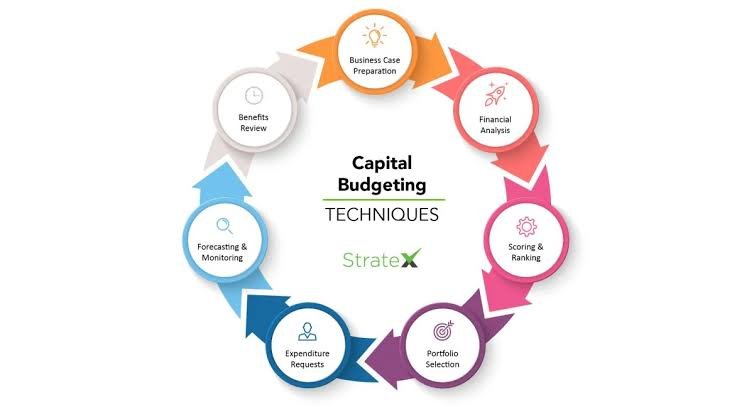The capital budgeting process is a critical function for any business looking to make informed investment decisions. Whether it’s expanding operations, acquiring new assets, or upgrading technology, businesses must carefully evaluate projects to ensure long-term financial stability. However, traditional budgeting methods often lead to inefficiencies, delays, and errors.
To ensure incremental improvement in decision-making, organizations are now leveraging advanced tools to streamline their capital budgeting workflows. These tools help businesses automate calculations, analyze risks, and optimize financial planning, reducing the manual workload on finance teams. Implementing the right software can enhance forecasting accuracy, improve collaboration, and drive better investment outcomes.
In this article, we will explore the top six tools that can incrementally improve your capital budgeting process, ensuring a smooth and efficient investment evaluation framework.
1. Spreadsheet-Based Budgeting Tools (Excel & Google Sheets)
While many businesses have transitioned to automated financial planning tools, Excel and Google Sheets remain indispensable in capital budgeting. These tools offer powerful formulas, pivot tables, and macros to handle complex financial models.
How It Helps:
- Enables incremental improvement by allowing businesses to refine their models over time.
- Provides a structured way to track capital expenditures and returns.
- Supports “what-if” analysis to evaluate different investment scenarios.
However, spreadsheets have limitations in handling large datasets and real-time collaboration, making them less effective for enterprises with complex budgeting needs.
2. Enterprise Resource Planning (ERP) Software
ERP systems like SAP, Oracle, and Microsoft Dynamics integrate financial planning, procurement, and accounting functions to create a seamless budgeting workflow.
How It Helps:
- Automates budget tracking and forecasting.
- Ensures accurate capital allocation across departments.
- Improves transparency with real-time financial reporting.
ERP solutions are ideal for large organizations that need a centralized system to streamline the capital budgeting process while maintaining compliance with financial regulations.
3. Capital Budgeting Software (Capterra & Planful)
Dedicated capital budgeting software like Capterra and Planful are designed specifically for evaluating capital investments. These tools offer built-in models for calculating Net Present Value (NPV), Internal Rate of Return (IRR), and Payback Period.
How It Helps:
- Standardizes capital investment evaluations.
- Reduces the risk of human errors in financial projections.
- Enhances decision-making with real-time analytics.
These platforms offer an intuitive interface for finance teams to assess project feasibility efficiently.
4. Business Intelligence & Analytics Tools (Tableau & Power BI)
Data-driven decision-making is essential in capital budgeting. Tools like Tableau and Power BI help finance teams visualize complex financial data through interactive dashboards.
How It Helps:
- Provides real-time insights into financial trends.
- Enhances risk analysis through predictive modeling.
- Helps stakeholders understand budget allocations with easy-to-interpret visual reports.
By leveraging business intelligence, organizations can drive incremental improvement in capital planning and make data-backed investment decisions.
5. Cloud-Based Financial Planning & Analysis (FP&A) Solutions (Anaplan & Workday Adaptive Planning)
FP&A tools provide a dynamic approach to capital budgeting, allowing organizations to continuously adjust financial models based on changing market conditions.
How It Helps:
- Offers cloud-based collaboration for finance teams.
- Enhances scenario planning to evaluate multiple investment options.
- Automates complex financial calculations, saving time and effort.
Cloud-based solutions are particularly beneficial for businesses with multiple locations, enabling seamless collaboration across finance departments.
6. Workflow Automation Tools (Cflow & Kissflow)
Budgeting involves multiple approval stages, making workflow automation a game-changer. Tools like Cflow and Kissflow streamline approval processes, ensuring that capital budgeting decisions move through the necessary checks efficiently.
How It Helps:
- Eliminates bottlenecks by automating budget approvals.
- Ensures compliance with corporate financial policies.
- Enhances accountability with an audit trail of budget approvals.
By integrating workflow automation into the capital budgeting process, businesses can enhance efficiency and reduce delays in investment decision-making.
Conclusion
The capital budgeting process is evolving, and leveraging technology ensures incremental improvement in financial planning and decision-making. From spreadsheets to workflow automation, the right tools can eliminate inefficiencies, enhance collaboration, and optimize investment strategies.
Choosing the right mix of budgeting tools depends on business size, complexity, and investment goals. Whether you’re a small business relying on spreadsheets or a large enterprise implementing ERP and automation tools, streamlining your capital budgeting workflow is essential for sustained financial growth.
By adopting these six tools, organizations can create a robust, data-driven approach to capital budgeting, ensuring smarter and more profitable investment decisions.

